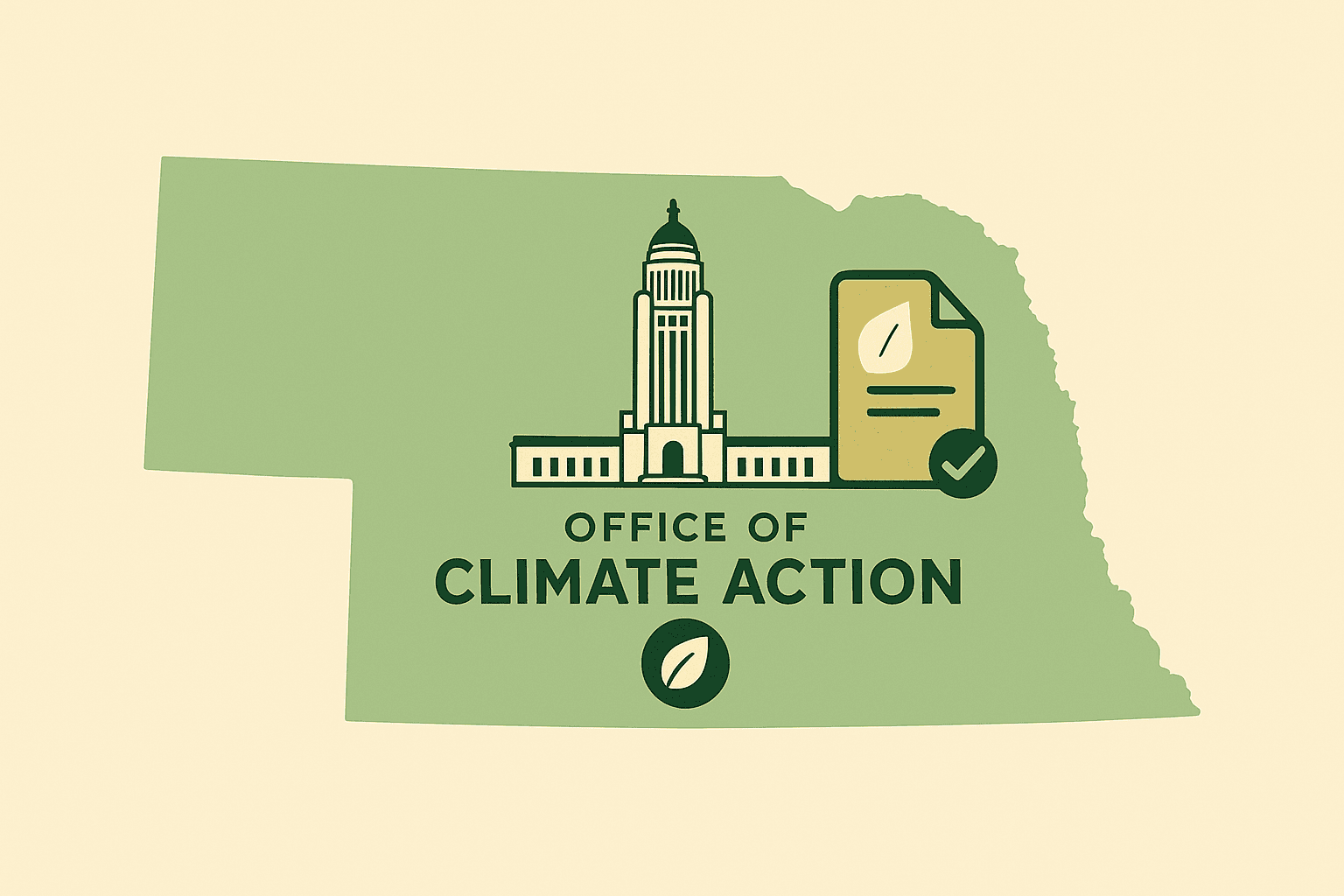Nebraska L.B.163 puts climate on the front burner
A one-page bill could tip Nebraska’s climate strategy from passive to proactive by standing up an Office of Climate Action. If that happens, expect new grant windows, procurement scorecards, and data demands to ripple through every factory gate.


L.B.163 in plain English
Nebraska’s bill would nest a small Office of Climate Action inside the Department of Environment and Energy, task the office with a statewide climate action plan by July 2026, and coordinate grant hunting across agencies (Nebraska Legislature, 2025). There are no carbon caps or material bans baked in—yet.
Why manufacturers should pay attention
Once an agency owns climate metrics, purchase specs tend to follow. Twenty-six other states already run climate offices and have used them to steer infrastructure dollars toward low-carbon products (Nebraska Examiner, 2025). This matter will effect your bid pipeline.
Dollars on the table
Sen. Spivey pitched the office as a “quarterback” to chase federal funds. Her team cited a recent $307 million USDA grant that hinged on emissions data (Nebraska Examiner, 2025). Suppliers armed with third-party EPDs often score higher in those grant evaluations because they can prove impact reductions without guesswork.
Expect a data cascade
Creating a climate plan means the state must inventory emissions across building stock, roads, and ag supply chains. Agencies typically lean on cradle-to-gate CO₂ figures pulled straight from EPDs. If your catalog lacks them, you may be marked “data-deficient” on the next DOT bid.
Get your house in order—fast
- Identify which of your products already have competitor EPDs in EC3 or ÖKOBAUDAT.
- Gather twelve months of utility, transport, and waste numbers for the rest.
- Line up an LCA partner who can wrangle that data and publish within six months.
The sooner your declarations go live, the sooner your sales team can chase state-backed projects while rivals scramble.
Watch the committee docket
L.B.163 is still in the Natural Resources Committee after its January 30 hearing. A committee vote could surface during the short fall session. Manufacturers who brief legislators on the cost of delayed specifications often sway amendments. Keep your lobby lead looped in.
The bigger picture
Nebraska may be corn country, but its climate playbook is starting to resemble coastal states that already reward low-carbon steel and asphalt. Securing robust, third-party EPDs now is the cheapest insurance against tomorrow’s scoring matrix. Even if L.B.163 stalls, the momentum for measurable carbon data in public work has already left the station.
Frequently Asked Questions
Does L.B.163 mandate EPDs for construction materials?
Not yet. The bill only creates a coordination office. However, once a climate plan is drafted, procurement guidelines that reference EPDs are a common next step.
When would a Nebraska climate plan be due if the bill passes?
By July 2026, according to the introduced text (Nebraska Legislature, 2025).
Will small batch manufacturers be exempt from future reporting?
The bill does not carve out size-based exemptions. Historically, state climate offices push for consistent data across all vendors to keep comparisons fair.
How long does it take to generate an EPD?
With streamlined data collection and an experienced LCA team, 4–6 months is realistic for most construction products.
Can existing ISO 14025 EPDs be reused for Nebraska projects?
Yes, as long as they are still within their five-year validity window and align with the relevant PCR.
